|
It's that time again, the deep dark days of winter - and dozens of holy days to help us thru...
It was an amazing 3+ weeks - traveling, connecting, enjoying, some teaching and discovering... and today I am in the mobile home in Waldport that is my current "home base"... resting a bit and catching up... Three weeks, 4000ish miles, all kinds of beauty and good times with loving and beloved family and friends - and a little teaching, speaking, coaching, and wandering around the edges.
Got home last night and delighted to spend the day on my own couch, catching the sunshine as it fills the room between rain showers, watching the light shift on the hills... All is, truly, well! May these weeks of holy days be filled with love and beauty for all! For much of humanity, the year 2020, and especially this winter, is the darkest time of their lives. It's a time of fear and frustration, of dealing constantly with an unseen, poorly understood "enemy" that seems to have the power to deprive us of life, of coping with economic situations we've never seen before, of feeling cut off and separated from the people and places we hold most dear.
While there are now and have long been troubles in many parts of the world, most of humanity has not faced any sort of hardship in their lives. They have grown up in a time of relative ease, as the global commercial culture has offered more and more interesting tools, toys, and ways to earn an income for more and more people in more and more places over several decades. So, without a history of having to do without or to find a way through painful or potentially harmful situations, too many people lack the inner skills and tools to help them through this period. Many of them haven't even heard the stories of how their parents or grandparents got through times like these. As a result, they don't know how to make a dollar stretch, or comfort themselves when unexpectedly alone, or connect at a deeper level with folks they don't see regularly. They don't know that "this too will pass," and that even the worst situation is often the best thing that ever happens to us. They only know that they miss what had seemed to be the most important parts of their lives - and they hurt. The consequences of this lack of knowledge and this deep pain become visible in eruptions of anger and upset. They lead to refusals to go along with regulations and placing blame on whoever's "in charge" or "should have prevented" the situation. They also lead to long hours seeking and searching for an explanation that can make sense, a story of what's happening that makes someone wrong, finding the exploration exciting in itself, getting all kinds of good feelings from solving bits of the puzzle, and beginning to believe that, somehow, that explanation will heal the hurt. These behaviors are normal, but in a world that has been focusing on short "sound bites" and "memes", rather than in-depth analysis of situations and psychological states, they were not expected. And in a world that can spread such isolated bits of information in a matter of seconds, they have escalated very quickly into what amounts to social movements. And within those movements, no other kind of information is allowed; if it doesn't fit the story they've worked out it must be "fake news." So now we have a humanity that appears to be divided. And it's not just 2 groups. It's at least 3, maybe 4. One group is those who have been suffering for decades and this is just more - consisting of perhaps 15-20% of the human population (which, by the way, is far fewer than ever before in history). A second group is those who've been through hard times before and are fairly certain they'll make it through, this time, as well, if they just keep centered and do their best - perhaps another 25-30% of folks. The largest group, close to half of the people in the world, are those who are dealing with the unknown and unexpected day-by-day, trying to do the right thing without really knowing how, feeling the strain but willing to keep going for a little while longer, even though they feel hopeless and powerless. The last group - and the most visible and vocal on the news and social media - are the folks who just can't cope with what's happening and are determined that it must be some conspiracy of unreality designed to hurt them and deprive them of their rights and privileges - about 7-10% of the world's population, most loudly in the US, but also gaining ground in other countries. So now we get to ask the important questions: what do each of these groups represent in me? What part of me feels lost; what part feels like we'll be ok? What part of my consciousness, the mind I'm not always aware of, is certain that someone "out there" is out to take things away from me - and is determined to prove it? What memory or belief have I hung on to that says the world isn't safe and that what is unknown is, by definition, dangerous? Because, always and everywhere, what we're seeing in the world around us is showing us what we believe, what we hold to be true, what we have assumed to be reality. That's the way the mind works, the way our perceptual systems work, the way humanity is wired. We always see what we believe; no more, no less. Always. And, as I ask those crucial questions, I can begin to see more and more layers of belief and assumption within me and around me that I have accepted. As I go into the quiet of my own mind, breaking away from the loud voices of fear and distress around me, I find whispers of thoughts and memories - voices of a parent or grandparent, from the television or movie screen, from a book, from the radio and the many songs I've heard or learned to sing. I find bits and pieces of a description of reality that has nothing to do with what's Real, bears no resemblance to the essence of Truth-made-manifest that is our birthright. As I sit or walk and breathe and listen to or let myself see images of what's floating around in my thoughts I begin to understand what it is that I'm seeing in the world - and why. In most cultures, this technique is taught to children. In almost every culture, this being quiet and reflective is part of each night's process. In the dark we can "see" with our inner vision that which was crowded out by the inputs from our eyes during the day. In our culture, based on the controlling structures of empire, it hasn't been taught, and has been actively discouraged. Because, as we get in touch with what's Real, we are no longer subject to the fear-and-control mechanisms of the culture; we are able to live "in the world" of global commercial empire, while "not of it." As we understand our own thoughts and motivations we can choose. As we think clearly and intentionally, we can see and experience around us a world that is more like what we were born to be in. And, as we do so, then those things which seemed so daunting or disturbing fade into the far background of our lives - even fade away, for we are not concerned about them or affected by them. In other times and places, we would be using these long, dark nights to go inside and discover, then release (usually in bonfires) those ideas that no longer serve us - or humanity as a whole - so that in the new year, when the spring returns, we might experience a more heavenly world, a world built on understanding what's Real, rather than on what we have feared and worried about. Perhaps that's why CoViD-19 lingers? Perhaps we are being called to use this darkest time of history to find the Light of Truth within, to learn to experience and express the Love that is our essence, to make manifest in the world around us the heavenly world that is our birthright. Here's a link to the talk I gave on finding that Light at the Florence Unitarians for their Dec 13 service: https://youtu.be/ucska5FL-Sc. 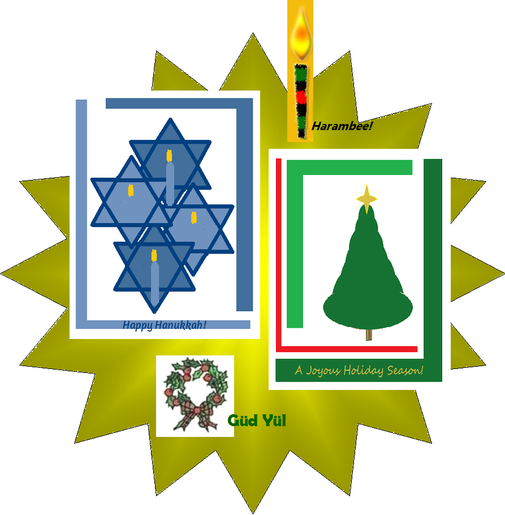 Once again, we enter the dark days of the year, when lit candles and firelight warm our hearts and feed our souls. Last year I posted a description of the different traditions, which you can find by clicking here. We're approaching Memorial Day and as I prepare my talk for Sunday, I thought I'd share some musings here.
Years ago my mother shared with me a series of science fiction books in which the main character is an orphan, raised by a group of elderly scholars. One was a philosopher, another an historian, another a retired world-traveling doctor, etc. You get the picture. Well, as the series unfolds our hero travels all over the galaxy applying his unorthodox, but highly effective techniques to all kinds of problems. He’s gone for years. And finally gets back home, only to find that those elderly gentlemen have passed away. And, though they have willed to him all of their collective belongings — from books to houses to bank accounts — he is bereft. They have betrayed him by not sticking around to be his support system now, when he needs it. He mopes around the old home for a while, feeling totally lost and unsupported. Then, out of his angst, he starts talking to them — you know how it is, “How could you? What am I going to do without you?” – all the usual stuff that we go through when we’re missing someone who we don't think we'll ever see again. Well, to his surprise — and the reader’s — his old mentors start answering him! After a while, his room is as full as it ever was, and each of them has something to contribute to his conundrum. I have to say I wrestled with that a bit. For about 15 years, in fact. Then I began applying the principles of New Thought - from Unity and the Science of Mind. I needed to heal some old hurts if I was going to be able to function as a working mother. And in the writings of Ernest Holmes and Louise Hay and Emmet Fox, a book called Emanuel's Book, some therapy manuals, and others, I found a series of steps that worked (check out the link to "Ruth's Method for Healing the Past"). And I also found a way of looking at our experience that I’d never seen in all the reading and searching I’d done all my life. I learned that, no matter who or what or when it appears to be, every experience we have is actually happening inside us! Even now, everything you are perceiving as outside of you is in fact a combination of ideas and feelings that are inside of you — and so am I. So when I look at the people around me, I’m actually CREATING them in my mind - my own personal world. And when I remember them... Well, I’m sure you can see how that’s even more the case. So I was healing some old hurts with my mother and some other folks from my past one day, using a process of visualization and internal conversation, and I realized that I was doing the same thing as the guy in that science fiction book! And, just like the guy in the book, I was getting answers to my questions that seemed to come from outside my own thinking! What’s even more amazing is, even though I never told any of those people that I was doing this work, they all changed their behaviors toward me! They said and did things differently around me because of the work I did with the images of them that I hold inside me. So what does all this have to do with ongoing life of those who seem to have died? Some of you have figured it out… You see, the people we know and love — and even those we don’t — all live in our own hearts, minds, and souls. And, as far as we’re concerned, that’s the ONLY place they’ve ever lived. Whether they’re in their body in the next room, on the other side of the country, or on the other side of the veil we call death — everything we know, love, and hate about them IS INSIDE US. So as long as we live, they live. They are alive, now and always, in our hearts and minds and souls. They are just as accessible inside us as if they were in their bodies — because the only place they’ve ever really been is inside us! And there’s more ... Because there is only One Mind, and my mind thinks the thoughts of the One Mind, then not only does everyone I’ve ever known and loved (or don’t think I love) exist as a thought in my mind... They all exist as a thought in the One Mind — and that is eternal! So here’s the gift of all this — got some unfinished business with someone who’s no longer on the planet? No Problem! Sit down and imagine them sitting in front of you, and tell them everything you have to say — good and not so good — then feast your inner eyes on them while they tell you what they have to say. You’ll be amazed! Then — and here’s the best part — tell them you forgive them, and ask them to forgive you, even if you think they hurt you... (I know, I know that doesn’t seem to make sense, but think about it, you’re the one who’s been carrying that hurt around and blaming them for it, so you need to be forgiven to release it. You can read about my discovery of - and wrestling with - this in the book that describes my own healing journey: Finding the Path) As you do so, allow both of you to feel the Light of Forgiveness surround you and lift you into the State of Grace. FEEL the love and light and peace and joy of it! Same thing for someone you really, really miss. Sit down and see them with you, allow them to let you know how much they care for you, and, again, tell them everything—good and bad—you’ve been thinking. Get to the place where all you know is the love between you. Then FEEL the wonderful state of love and light and peace that is your birthright! THIS is what it means to be a spiritual being having a human experience! This love and light and delight that comes of being freed of all burdens of fear, loss, and guilt in our relationships… This knowing that, in Truth, all is consciousness, and all hurts and breaks are healed in consciousness — we are made whole... THIS is the salvation we’ve been promised, the fulfillment of our true nature. We are eternal ideas in the One Mind, and we have the creative power to transform our experiences by tapping into that Mind through the power of imagination. As we allow ourselves to KNOW that everyone we love is alive in us, and that the way to connect with them is through that “wormhole” into other dimensions that we call our hearts, then we begin to live the life we that is our birthright — the life of love eternal. Bless you on your journey! 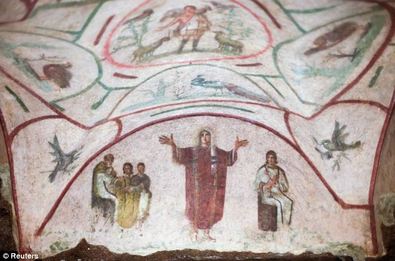 In the Celtic traditions—now handed down as Wicca and Neo-Paganism—life is celebrated in the cycles of the great trinity: Earth, Sun, and Moon. For virtually all indigenous (earth-based) cultures,
So, at the midpoint between winter solstice and spring equinox (Imbolc, which we celebrate as Groundhog’s day), a young woman (often a pregnant, unmarried one) is dressed in white and wears candles on her head and is called Bride (pronounced breed). New lambs are born at that time, as are many babies, and the word imbolc means “in milk.” And at the first day of spring, when the moon is full and the sun has passed its midpoint in the heavens, this same young woman is honored as Oestre (pronouced ester), and she comes into town wearing a sky blue gown, with fresh flowers and herbs, and with rabbits or hares around her, carrying beautifully colored birds’ eggs for people to feast on...and we continue to honor her holy day as Easter. The old, closed in life of winter is over, and the sun has warmed the earth and restored the waters so that all might live freely, again. 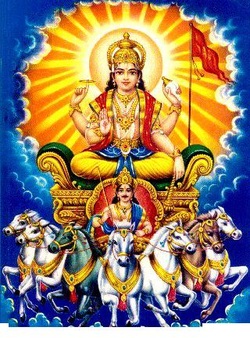 There is a masculine aspect to this season, as well. This the time to choose which of the young rams that were born in February will be allowed to grow into maturity, and to sacrifice the others for the good of the herd—and the feasts of the people! The Paschal (referring to sheep) feast, which the Jews honor today as Passover, is a continuation of this ancient tradition. And, among the earth-centered cultures, the mother can nourish only when the father seeds her, as the father Sun/Sky was understood to nourish the Mother Earth. So, in the cycle of the years, a young man is chosen to live the life of the Sun—to replenish and restore the people’s harmony with, Earth. Throughout human history and pre-history, from Egypt to Scotland and into India, we find accounts of this man.
Then, one day, in High Summer, at the Feast of the High King (our August 1), his time comes. He is anointed and named the King of Kings. And for the next 7 years, he has all power—anything he asks is granted, and all that he declares is truth.
While many references exist to such kings (our most famous is King Arthur), and we can look at the timetables of history to see who many of them are, there is only one whose full story is well known today: the man we call Jesus, who was known to his people as Yshua ben Yusph.
He was one of a long line of men who were born to reunite the people with their true heritage, going back over 3000 years, and he knew it and followed the traditions.
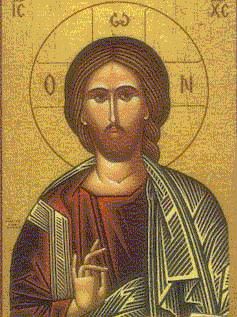 But Yshua ben Yusph was different. He didn’t just use these 12 to do his bidding, but taught them to do what he did. And when he went around his native land, Judea, he not only taught the ritual truths, but more. He taught that all people had the same power, if they learned how to tap it and use it. Looking over the historical records, we can see that the anointed King of Kings, the all-powerful Sun King, typically reigned 7 to 9 years. And in those records, we can see that, at the end of that period – one full pattern of the planet Venus in the sky – traditionally, his chief lieutenant, his “right-hand man” had the sacred duty of killing him. Always at the full moon—after the spring or fall equinox. Usually, they would go hunting and there would be an “accident.” Then the King’s body would be carried home, dripping his blood across the land, and so nourishing it. “The King is dead! Long live the King” would be shouted along the way. The Lamb of God would be sacrificed so that all might live, and harmony (heaven) might be restored on Earth. The Master we call Jesus knew this and planned for it. And so, on the night of the full moon following the spring equinox, after the Paschal feast, he waited in the garden for his closest disciple, Judas Iscariot, to return and do his duty. And here, again, we have a difference. Rather than coming with a sword, his lieutenant, Judas “betrayed him with a kiss.” And the Temple guard took him away for a trial in the Temple. Perhaps Jesus knew there would be a difference. Perhaps he realized that this was the end, not only of a 7year cycle, but a 2000 year era, and that his sacrifice would be different. Jesus, after all, stood for a way of life that was contrary to the urban hierarchical structure of the Roman Empire, of Jerusalem, the temple, and the Pharisees’ priesthood. He stood for everything they were trying to get away from, yet he did so within both Law and tradition. So the priests could do nothing to him. So he was sent to Pilate, who recognized him for what he was, and did what he could...even labeling the cross with his transgression... Iesu Nasorean Rex Iudeae. And, in spite of all, he went through a very public execution. It was a highly charged time; short as it was for the usually drawn-out process of crucifixion. Thunder clouds gathered as the King of kings was shorn of his dignity and hung; The sky darkened with an approaching eclipse as the guard broke tradition and let Jesus drink of the bitter herb. And then he did something no others have done—rather than simply forgiving his trusted lieutenant for doing his duty, he forgave all who were involved with his death, for “they know not what they do.” He didn’t want them to carry the “karma” of killing, to have to “reap what they sowed” 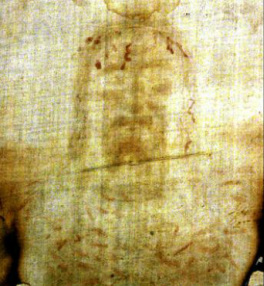 Then, in that state of Union with the Divine, he “gave up his spirit” and let the body die – at the full eclipse – and the earth shook so that the curtain hiding the Holy of Holies was torn from the top down… And in that forgiveness, letting go of his life, he empowered himself to transcend from the material plane. He empowered his resurrection. We know from many sources that the divine son of the Sun had to experience days in a tomb and rising from it as part of his training. The pharaohs went through it; they were sealed in a pyramid without air or light for 3 days. And Deepak Chopra tells how he and his fellow medical students buried one of the holy men in India, the Sadhus, in a box in the school yard for 5 days, and then raised him up and he walked away. So rising from entombment is not impossible... And the Shroud of Turin continues to baffle engineers and archeologists... Jesus was neither the first nor the last King of Kings. But, thanks to Paul and the gospel writers, we know his story. Jean Houston’s Godseed is the process of living that story, as a means of personal empowerment, and she says that its strength is that while we’ve heard similar stories before, they were of far-off figures, and this is the story of a person who lived among us. And that person, whose life and words were recorded as he walked among the people, said that we could do likewise. Which is the essential understanding of New Thought. Now we have completed the Eon, or zodiacal Age, which Jesus began. The Piscean age, symbolized by 2 fish, is over. The Aquarian age, the symbol for which is people carrying their water bottles, has begun. The tribulations he experienced were the hallmark of that age. The harmony he taught, the “heaven at hand” that he encouraged people to experience, is the hallmark of the next 2000 years. So let’s use this knowledge and go forth in power. Let’s use this power that he demonstrated that we have, and restore, once more, harmony among the people, and with the Earth. And, as we sing in the Peace song, “let it begin with me”, let it begin with each of us, as we accept the truth of our being and live it. 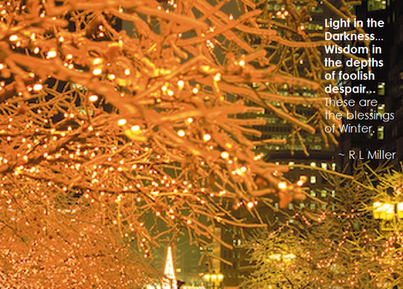 ‘Tis the season to light up the world! For Americans in the Christian tradition, it’s time to celebrate the birth of Jesus, the Savior, Light of the World. For many Americans, though, the lights of the season have a different spiritual meaning. At this time of year, with its long nights and short days, the sun, our source of light and warmth appears to be traveling further and further south each day. Then, one day, about December 21, it seems to stop. We call it the Winter Solstice, which comes from the Latin: sol meaning “sun” and stice meaning “standing.” It rises and sets in the same place for 3 days, until December 25, when it rises a little northward on the horizon—the beginning of the return of the light. Ancient peoples tracked this movement, and those who used a calendar based on the sun often suspended time for those 3 days and held feasts and religious rituals to honor the return of the light. Many people today still follow those ancient traditions. 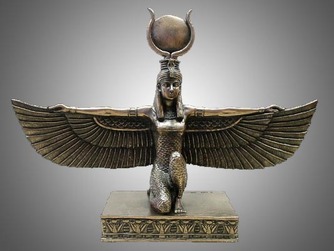 Somewhere between 1600 and 1200 years before the birth of Jesus, a man named Zarathustra (the Greeks called him Zoroaster a thousand years later), in the area we now call Iran, had a vision that there is only one divinity, all good and all wise. He called it Ahura Mazda, which means “Wise Lord.” To explain the difficulties of life, he described twin offspring of that One, who chose different paths: the Light and the Lie. His ideas became the dominant religion of the Persian empire for over a thousand years, and the “fire temples” of Zoroastrian priests, who were often called Magi, may still be found across Central Asia and in northern India, where believers are called “Parsees.” Today, thousands of Zoroastrians light candles on their holy days, including the winter solstice, to remind them to choose the path of Light. They also honor twelve divine qualities: wisdom, power, life, etc. with stories of saints (meaning “holy ones”) who embody them, one of whom was called Mithras. About 500 years before Jesus’ birth, Jerusalem was conquered by Babylonians and its people were exiled. They were restored to their homes when Babylon was conquered by the Zoroastrian Persians. An emperor who recognized their one God helped them rebuild the temple, replacing the sacred menorah, in which oil-lamps were kept lit—the flames reminding people of God’s presence in the temple. Two hundred years later, Alexander took over the Persian empire, including Israel. Later Greek emperors wanted to have their gods and goddesses worshipped in the Jerusalem temple as they were everywhere else. The Jews revolted, and one group, the Maccabees, wrested the temple from the Greek soldiers. There they found the menorah nearly empty—only enough oil for one day! They prayed and held off the Greeks for 8 days, and the whole time the flames remained lit! This miracle is the basis for the Jewish festival of Hanukkah, which moves around a bit, since the Jewish calendar is based on the moon, and starts December 22 this year. 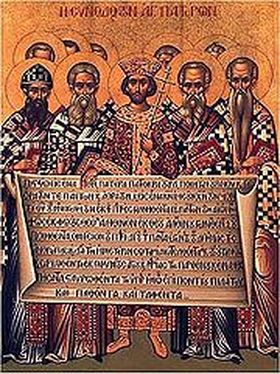 The Romans took over the Greek empire about 100 years before Jesus’ birth. Roman religion combined traditions from all over the Mediterranean, and an important holy day for the Roman soldiers was the birth of the Zoroastrian saint, Mithras, on December 25. The Roman calendar was based on the sun and sometimes, to make the calendar work, a festival called Saturnalia (because the planet Saturn was visible as a bright star) lasted 12 days, starting December 25th. The Roman Empire lasted around 500 years. The Roman emperor was considered a son of Jupiter, the greatest god, and was head of their religious life. So, when the empire became Christian, much of the emperor’s power was transferred to the Bishop of Rome, il Papa, whom we know as the Pope. It was his job to bring the people of many countries into one ecclesia catholica (meaning “universal church”). So, over the next several hundred years, the Roman church adopted and adapted many local traditions, turning gods and goddesses into saints, and making holy days fit into the Christian story—including the birth of the Light of the World before dawn on the fourth day after the winter solstice. Martin Luther and his followers broke away from the Roman church in the late 1400s, protesting the many ways the church didn’t honor the Bible (and so were called “Protestants”). They gave up most of those adapted traditions—except the birth of Jesus on December 25. In fact, Luther is often credited with having created the first Christmas tree, lighting candles on an evergreen to remind us that Jesus is everlasting life and the Light of the World. 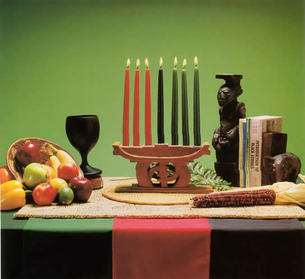 In the 1960s a group of African Americans, seeking to reclaim some sense of heritage and place as a people, decided to adopt a Zulu harvest festival. They named the six days following December 25th Kwanzaa and created rituals based on lighting candles and feasting. Using Swahili words, they gave each day a focus: Imana: Faith; Umoja, Hope; etc. The idea took hold and now millions of African Americans celebrate both Christmas and Kwanzaa, each year. By whatever name, we all seek the same thing, the peace and light and love of God. And at this season, especially, we honor the birth of the Light of the World in our hearts. May the blessings of the season be yours, always. 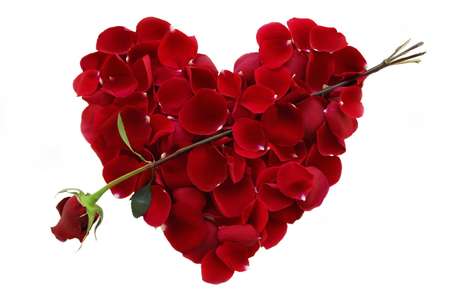 Tomorrow is Valentine’s Day – or “national hearts and flowers day” as my wasband calls it – when lovers all over Western culture celebrate their romance with gifts and special outings, and young children are encouraged to give cards to everybody they know saying “I love you” or “be my Valentine.” I’ll be working. It’s a second Sunday, which I’ve committed to the Florence Unitarian-Universalist Fellowship, here on the Oregon coast. I’ll speak at the Sunday service, helping to lead the singing, then, after the refreshments, I’ll sit in a “dialogue circle” with some of the folks to explore the ideas further. Lunch with a few congregants will be followed by an afternoon in the office, visiting and counseling with members. Then an hour or so of group meditation, and a quiet evening in the home of two women who help to maintain this wonderful congregation. Not exactly romantic, but, truly, a day filled with love – the love between the people who attend, the love I feel toward them, the love they share with me, the love that flows through me as I open to my Higher Power for guidance in speaking, the love that built this congregation, and more… Which is what I’ll be talking about during the service: how Valentine’s Day has kept love between mortals a part of the Christian tradition, and how that love can mature beyond the adoration of childhood and lust of adolescence to a wonderful range of emotions and actions and experiences that can lift us far beyond our norm. For all the Abramic “people of the Book” – Judaism, Christianity, and Islam – love for God is fundamental, and loving one another is encouraged: as friendly, agape in Greek, or “brotherly,” philos in Greek. To love one another as siblings means to put up with foibles and weaknesses, to support each other’s growth and development, to reach out in caring ways, to trust fully, and to share without concern. And it’s what schoolchildren are encouraged to feel when sharing Valentine cards, cookies, and candies. All that’s good. But that kind of love is not what holds a marriage together, or drives someone to overcome tremendous obstacles to save another person or create a new lifesaving process. No, that kind of love requires passion, which, in Greek, is eros. Romantic or sexual passion is fundamental to a good marriage, and is what Valentine’s Day symbolizes in our culture – unlike any other day in the Christian calendar. Not that it’s really important in that calendar – the lack of data about the original saint has led the Roman church to downplay the date considerably. But they’ve left it for those who wish to honor it – which I believe is a good thing. (to see a video of Ruth's talk, CLICK HERE) 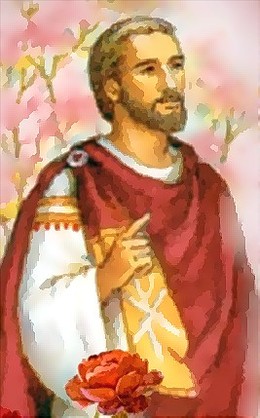 So who was that original Valentine? Valentinus was a common name during the Roman Empire, meaning courageous, valorous. And it seems that 3 Christian leaders bore that name at about the same time: 250-280c.e. Of these, 2 are reported to have been from the nearby city of Terni and to have been beheaded in Rome during the reign of Emperor Claudius II. These are probably actually the same person with slightly different reports. What Valentinus did to deserve beheading is not clear, but the strongest tradition is that the emperor needed huge amounts of soldiers to restore the badly damaged borders of the empire and so made it unlawful for young men to marry until they’d served their duty. Bishop Valentinus, not wanting people to sin by coming together without marriage, went ahead and married his Christian followers in secret. One version of the story says that he was put under house arrest in the home of a judge while awaiting the imperial decision, and that the 2 debated the power of Christ until the host challenged Valentinus to use that power to heal a young girl who was blind. She was healed and the man and all his household became Christians as a result. The stories go on to suggest that Emperor Claudius II had a few conversations with the bishop, too, which went agreeably at first, but at some point he drove Valentinus out to be stoned to death. My sense, based on the limited knowledge we have of Claudius’ background, is that Valentinus’ Christ came far too dangerously close to the soldier’s god Mithras, a far more ancient “son of God”, and that even though Claudius himself may have been intrigued, he could not, as the head of the Roman army, allow this heretical teaching to continue – nor could he let Valentinus continue marrying Christian men. The stoning, we’re told, wasn’t enough to kill Valentinus, so they beheaded him and buried his head outside the gates in a spot which the Christians marked, so that some time later it was dug up and carried back to his home town. The traditional date for his martyrdom is Feb 14, 269c.e. 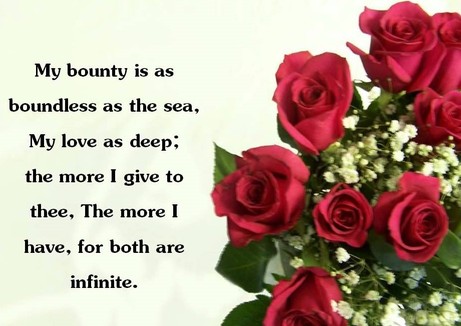 So Valentinus was a hero to young couples and to blind children. But what about those hearts and cards? Well, remember that little girl who had been healed of blindness? The story goes that when Valentinus was taken away from her home to see the emperor he left her a note telling her of God’s love for her and his own, and signed it “your Valentine.” My favorite explanation is one my grandmother used to tell. She said that while he was under arrest Valentinus’ followers would gather outside the house, hoping to see him. He wasn’t allowed to preach, or even to send them letters, but there was a vine with large, heart-shaped leaves, a philodendron (and she’d point to one that we always had while I was growing up), growing outside his window and each morning he would write a few words of loving encouragement on a leaf and send it floating down to his people. They kept them long after he was gone as reminders of his love for them. It was another 200 years before Valentinus was made a saint, and his feast day was set as Feb 14. Now that date is interesting in itself. The next day is Rome’s “4th of July”, when the children of the city’s founders (and later, anyone who was willing) would gather at the cave where Romulus and Remus, the founding twins, were adopted by a she-wolf, go through an initiation involving sacrificing a goat and a dog, then run through the town naked with strips of bloody goatskin, swinging it at every woman in sight. On the 14th they cleaned out houses and temples, and took ritual baths, on the 15th they ran, and on the 16th they would bed and often wed one of the women they had “lashed.” Called Lupercalia (lupus means wolf) it’s the day when, according to Shakespeare, Antony offered Julius a crown as king of Rome and Julius, already calling himself Caesar, said “no,” and so died a month later. Chaucer connects the 2 in his Parliament of Fools, commenting that mid-February is when the birds choose their mates and so it made sense that people would do so as well. As a result many people think that “national hearts and flowers day” is a remnant of that ancient rite of purification and mating. So that explains the hearts and the couples. What about the cards? Well, those were a French invention, over a thousand years later, in 1415, when Charles, Duke of Orleans, was in the Tower of London and wrote a loving Valentine’s Day poem to his wife. It’s on display in the British Museum. It was a marvel that caught attention, and by the late 1700s sharing love poems with hearts, spring flowers, and references to Eros’ arrows of love was very much a part of life in upper class England. Then, in the late 1800s, a British printer began to mass produce these poems as cards…and you know the rest of the story.  Oh, chocolate! Yes, well, when it arrived in Europe in the 1500s it was obviously an aphrodisiac – so of course it had to be shared on this day of all days! But regardless of the trappings of the day the core message is still the same: we are loved by our Creator and that love is part of us, waiting to be expressed. We express it in many ways, as children and as parents, siblings, and friends – and if we are truly fulfilling our capacity as humans, as committed lovers ever deepening our affection, appreciation, honor, caring, joy, delight, understanding, empathy, and all the other qualities of a true and mature love with our beloved. Happy Valentine’s Day!  It’s high noon on New Year’s eve, which here in Oregon means the sun is almost due south, half-way up the curve of the sky above the horizon. I’m sitting on one of my favorite pieces of furniture, next to a south-facing window, absorbing as much of those warm rays as possible. There are a few holiday decorations scattered around the room – some of my “Father Christmas” figures, a small crystal Nativity, some greens and candles, and a small snowy village of 2-4” ceramic buildings with ½” high doorways that I’ve enjoyed collecting over the years. They’ll stay up until Epiphany, January 6, following a tradition from my mother’s family of honoring the 12 Days of Christmas.  I woke up this morning as the first golden rays peeked through the branches of the old Douglas Fir tree outside my east-facing window - a wonderful sight after over a month of cloudy skies, torrential rains, and hurricane winds. A few days ago, at the solstice, it was too far south (and hidden by clouds) to see through my window. Today, my first full day in my home for almost 2 weeks, has been quietly unfolding in small tasks, many of them outdoors in the glorious sunshine: sealing a leaky window, gathering some greens from the garden, filling the hummingbird feeder (after watching the hummingbird unsuccessfully test all its outlets), gathering the fallen branches off the front lawn, cleaning off some burned-on goop in the oven, putting together a few things to share as gifts while I’m gone, and, thankfully, a wonderfully cleansing shower-and-shampoo. Breakfast was pancakes made with eggnog, a traditional holiday favorite in our family, ever since I invented them on a wintry coastal retreat where there wasn’t much else to eat. The other day I found some organic eggnog with no artificial flavoring and when I saw it in the fridge this morning I knew it was precisely the thing. I mixed it into a little gluten-free whole-grain pancake mix, with the added treat today of a handful of pecans. A little butter melted on the old cast iron griddle cooked them perfectly. With sliced oranges and a big mug of decaf coffee – who could ask for anything more delightful? There’s a ham bone from my daughter Dawn’s Christmas dinner (which her husband cooked and I greatly enjoyed!) in the freezer and I have a few black-eyed peas stashed away – traditional New Year’s Eve fare in my mother’s family – maybe I’ll cook those up with some of the greens from the garden for this evening’s supper, and to share with folks wandering in. 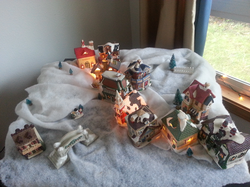 Aren’t traditions wonderful? They remind us who we are and where we came from, and give us an opportunity to choose anew who we will be. Like most folks, I’ve picked and chosen which of the traditions I grew up with I would offer my children, or now, continue for myself. And like some, I’ve invented a few – like eggnog pancakes. Friends of mine tell of having made a pot of chili to celebrate their first Christmas together and continuing to do so for the over 40 years of their marriage, a tradition which their daughter shared with them via cellphone picture-sharing this Christmas day. Others tell of letting go of traditions that have, in the past, put so much pressure on them that the winter holidays were a time of dread, rather than peace and beauty. Good for them! 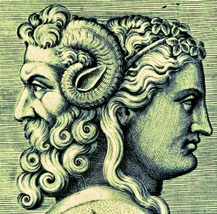 Tomorrow is January 1. Janus, the two-faced god, looks at the past and the future at the same time. This is his month. This is when we realize that much of what has happened in the past year no longer serves us and is no longer necessary, so we release it. This is also when we look forward to the year ahead, seeing with our inner eye what is possible and choosing which of those possibilities we will keep that inner eye focused on. For what we focus on is what we will experience. That’s psycho-cybernetics. It’s also applied metaphysics, or what Emma Hopkins called “the Spiritual Science.” It’s what’s referred to by “where your heart is, there your treasure is also,” and “keep your eye single.” Our attention, focused with feeling (good or bad), is what frames our experience. So, today, I’m basking in the warmth of the sun, appreciating the rain that filled my rain gauge several times over this past month, trusting that minimal damage was done to people, homes, and ecosystems in the process, feeling warm and content in my home, aware that I’ll soon be on the road working with others once again, and choosing to focus on a balanced Life of Love and Light for the year ahead. A Blessed New Year be yours! R |
Categories
All
The mandala image above is one that Ruth made and updates periodically.
Click on it to enlarge it. Right click on the enlarged image to copy it. Archives
May 2025
CLICK ON THE RSS feed button BELOW to have Ruth's Postings sent to your email:
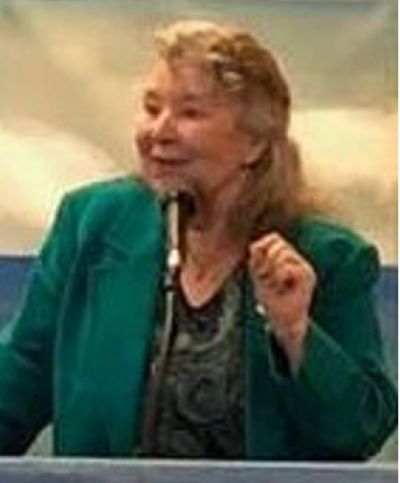
CLICK HERE to view a range of YouTube videos featuring Ruth and her teachings. CLICK HERE to view talks she's given at Portland CSL CLICK HERE to view talks she's given at Ocean Unity. And CLICK HERE to access some of the talks she's given at the Florence Unitarian Universalist Fellowship. Here's some GOOD NEWS from around the world:
|
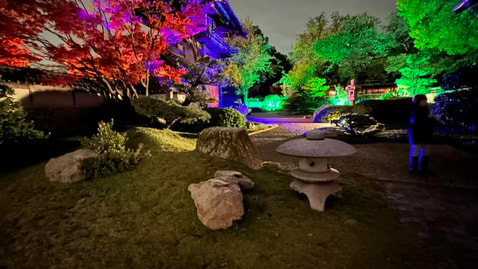

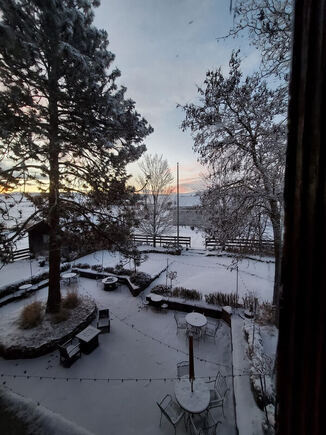
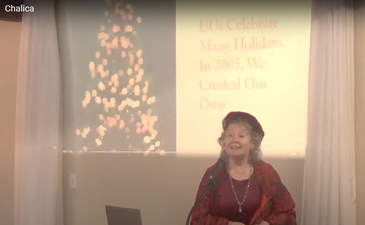

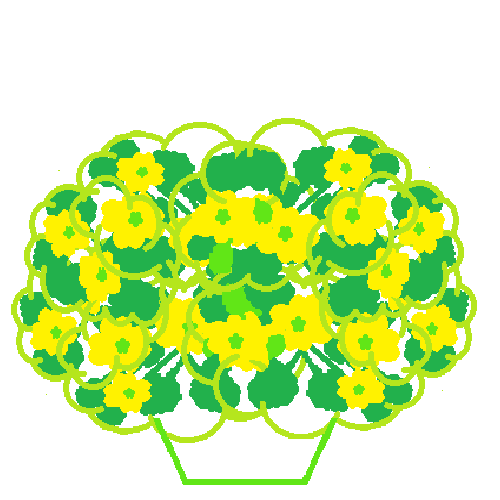
 RSS Feed
RSS Feed